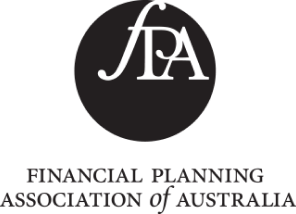

Plan
Receive independent and personalised financial advice
Review and adapt that advice to your changing life
Grow your wealth and secure your financial future
Ownership structuring and asset protection
General taxation planning
Debt management
Insurance advice
Investment advisory
Superannuation advisory
Self-managed Super Fund advisory
Estate planning
Retirement and succession planning
Philanthropic advice
In your next life stage, you’ll focus on diversifying your wealth as well as maintaining and growing your lifestyle.
As you prepare for your retirement stage, you’ll continue to maintain your lifestyle and look after your family.
Finally, you enter the relaxing stage of life during which you’ll continue to manage and protect your wealth for future generations.

seeking a trusted partner to plan all their aspects of wealth and personal finances.

seeking an expert partner to plan and accelerate their wealth creation.

Identify lifestyle and financial needs and craft strategy

Confirm and execute your wealth growth strategy

Build wealth and continuously review and refine strategy
When you partner with Cashel Family Office, you get a dedicated team of advisors working to ensure you’re getting the best financial planning. We work with you to ensure you’re investing with quality managers and assets that match your personal risk and tax profile.
We do not employ a set-and-forget strategy. Once we become your investment manager, we provide ongoing advice each year. Our planning takes into account financial and compliance reporting periods as well as your life events.

Our advisers hold related master’s degrees in finance, Chartered Financial Planner and Chartered Accountant qualifications that provide the skills needed to handle your family’s individual needs. Our ongoing training ensures we are at the forefront of thought leadership and best practice.
Our Australian Financial Services and Australian Credit License provides us with the unrestricted ability to source and compare financial, insurance debt and investment products and opportunities from every possible source.






How are financial planners paid?
A typical financial planner may charge $1,500 to $10,000 for a plan known as a statement of advice. They may then charge additional fees for execution of the plan.
Cashel Family Office does not charge financial planning fees. Our financial planning services are included as part of our investment management services for which we typically charge a flat ongoing 1% fee plus performance fees for when we beat the market. Under this scenario we are encouraged to protect capital and grow it through the selection of the right financial planning strategies, cheapest debt sourcing and optimize investment management. There is no additional cost to reply to an email or have a meeting.
What lifestyle should I expect in retirement?
According to the Association of Superannuation Funds of Australia Limited (ASFA) the retirement lifestyle definitions are:
Comfortable
Modest
For Pension
Cashel Family Office believes that most people want a lifestyle that is broader and more fulfilling than these narrow definitions. We have made it our mission to achieve more for our clients.
How much do I need in my superannuation to live a comfortable lifestyle today?
According to ASFA to live a comfortable lifestyle in retirement now, you will need the following in your superannuation fund:
This assumes you own your home outright.
If you would like to live a modest lifestyle in retirement now, you will need the following in your superannuation fund:
How much do I need in my superannuation fund to live a comfortable lifestyle in 30 years?
According to ASFA to live a comfortable lifestyle in retirement in 30 years, assuming inflation of 2.5% p.a, you will need the following in your superannuation fund:
This assumes you own your home outright.
How much is superannuation taxed?
Superannuation is one of the most tax effective investment structures to accumulate wealth in. The tax rate varies depending on your stage of life:
Do I need a self managed superannuation fund to retire comfortably?
No. Self-managed super funds are actually one of the most expensive structures to accumulate superannuation in. In 2013, Rice Warner conducted research that indicated that the average SMSF costs were $8,033 per year. Along with having in-appropriate insurances, a SMSF is one of the major costs that can impact your retirement lifestyle.
Only where you have over $1 million in your SMSF does the costs of operating it compare favorable to a retail superannuation fund. Despite this, the latest research shows that approximately 65% of SMSF have less than $1 million invested, 43% have less than $500,000 invested and 19% have less than $200,000 invested.
Why would I use a self managed super fund?
Under the recent changes to the legislation that governs superannuation, there are limited benefits to having a SMSF. The main reasons that would make a SMSF appropriate for you are the following:
If you are a trustee of a SMSF and intend to work overseas you will likely be treated as a non-resident and as such be taxed as such, under these circumstances you would be best to transfer the assets to a small APRA fund or a Retail Superannuation Fund.
Many people were advised to set up a SMSF to enable broader investment options. This is no longer needed, many industry super funds are allowing direct share investments, and Cashel Superannuation Fund enables complete choice (within reason) due to its global custody arrangement.
What is a small APRA fund?
A small APRA fund (SAF) is essentially a self-managed super fund with a professional trustee. A SAF offers all the freedom and flexibility of a self-managed super fund but without the associated trustee responsibilities and risk of compliance breaches. There are, however, costs that are higher than a retail super fund.
How can I calculate what I will have for retirement?
Please feel free to contact a Cashel Family Office adviser to assist with calculating your likely retirement savings. Alternatively please use the calculators provided on the ASIC Money Smart website.